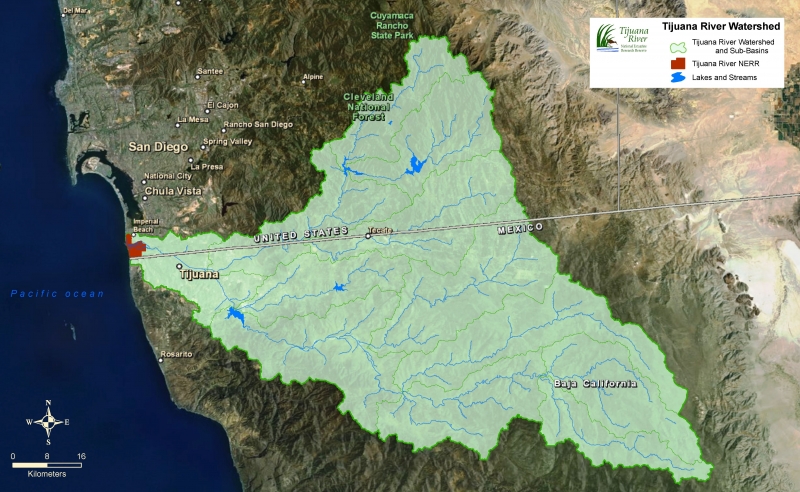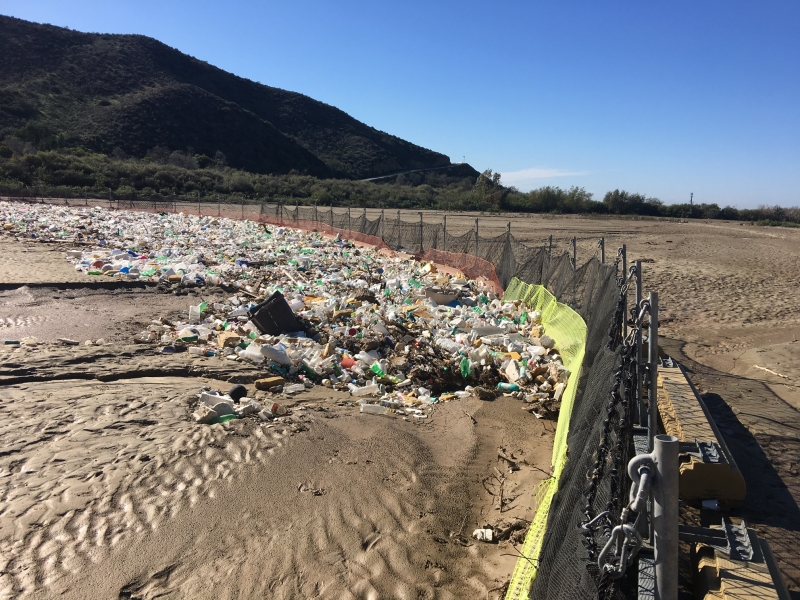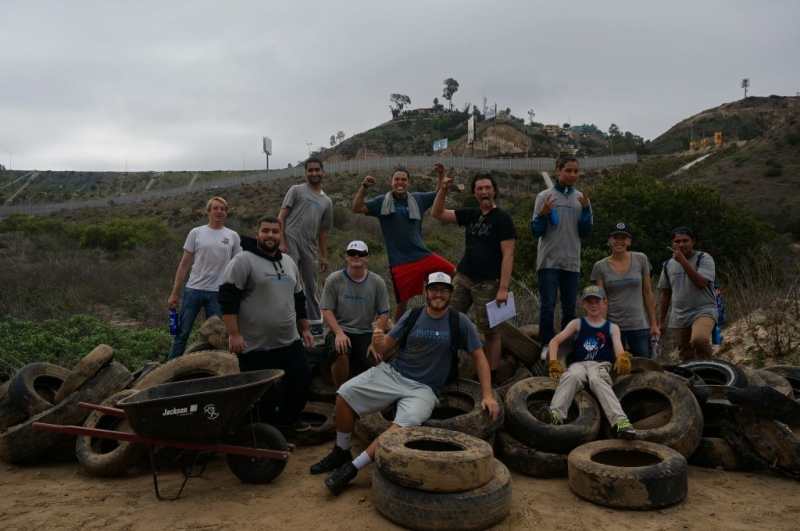Happy Public Lands Day! To celebrate, we are highlighting the astounding success of a public lands project that has prevented thousands of tons of debris from entering the ocean.
In the southwest corner of the continental United States, our partners at the Tijuana River National Estuarine Research Reserve (TRNERR) and Southwest Wetlands Interpretive Association (SWIA) are leading bi-national efforts to reduce the impacts of marine debris in the Tijuana River Valley. The unique geographic and political location of the Tijuana River Valley creates a dynamic environment with no shortage of management challenges. With the majority of the Tijuana River watershed in Mexico, the river crosses the U.S./Mexico border into a broad and ecologically significant river valley and estuary adjacent to the Pacific Ocean. Many factors make it hard to address marine debris in this region, but success has risen out of a strong community of partners on both sides of the border.

In the Tijuana River Valley, marine debris is much more than an eyesore. Tijuana is a bustling border city that is developing rapidly. Unfortunately, waste collection services and other infrastructure has not kept pace and a significant amount of trash ends up as debris in the eroded canyons that surround the waterway. Trash, plastics, and larger debris that wash downstream from Mexico threaten and degrade the Tijuana River Valley and TRNERR’s valuable ecological, cultural, recreational, and economic resources. The issues can be exacerbated during storm events, when trash can clog channels and cause extreme flooding on both sides of the border. Debris has also been identified as a human health issue, as some items, like tires, can hold standing water and serve as a breeding ground for disease-spreading mosquitoes. These public health and safety concerns compound ecological impacts from debris and other environmental stressors in the region (e.g., invasive species).

Despite all of these management challenges, the region has had a lot of success as numerous organizations are working tirelessly on both sides of the border to address this bi-national pollution issue. Since 2014, the NOAA Marine Debris Program’s (MDP) Community-based Marine Debris Removal Grant has supported SWIA’s efforts to prevent and remove debris at the TRNERR, which is part of a national network of National Estuarine Research Reserves co-managed between NOAA and the coastal states. SWIA and TRNERR are partnering with officials in Mexico to prevent debris at the source, upgrade trash capture infrastructure to trap debris in large sediment basins, and organize volunteer cleanups and other outreach initiatives to raise awareness about the issue. To date the MDP has supported the removal of more than 1.1 million lbs of debris from the Reserve. At the same time, our Federal partners at the Environmental Protection Agency Border 2020 Program have furthered the impact by also supporting waste reduction efforts in Tijuana. This Public Lands Day, our hats are off to all of the organizations working to protect the Tijuana River and local communities!


What wonderful, positive news! Thank you and rock on!!